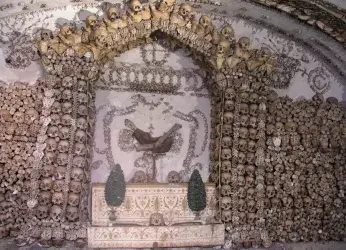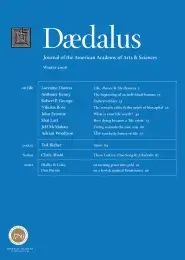
Image:
Tomb of Cappucin monks in the Roman catacombs, in a photograph from the nineteenth century. Etruscans had buried their dead in underground chambers, a practice revived by early Christians; after 380, when
Christianity became the state religion of Rome, the dead were increasingly buried in church cemeteries. See Shai Lavi on "How Dying Became a ‘Life Crisis’": “The problem of dying dates back . . . to the emergence of a wish
for an intelligible hope in the face of a hopeless existence.” Photograph by Dnalor_01, licensed under an Attribution-ShareAlike 3.0 Unported (CC BY-SA 3.0) license.
